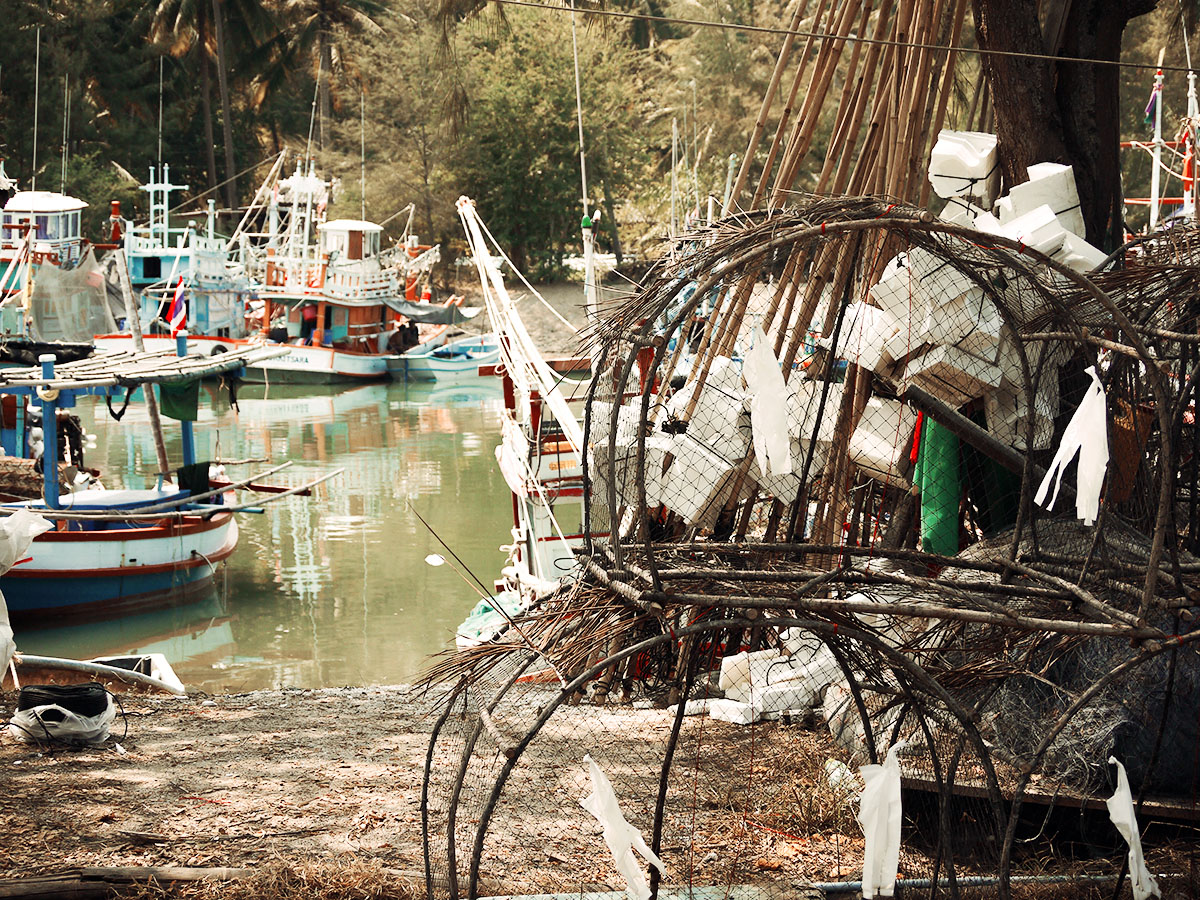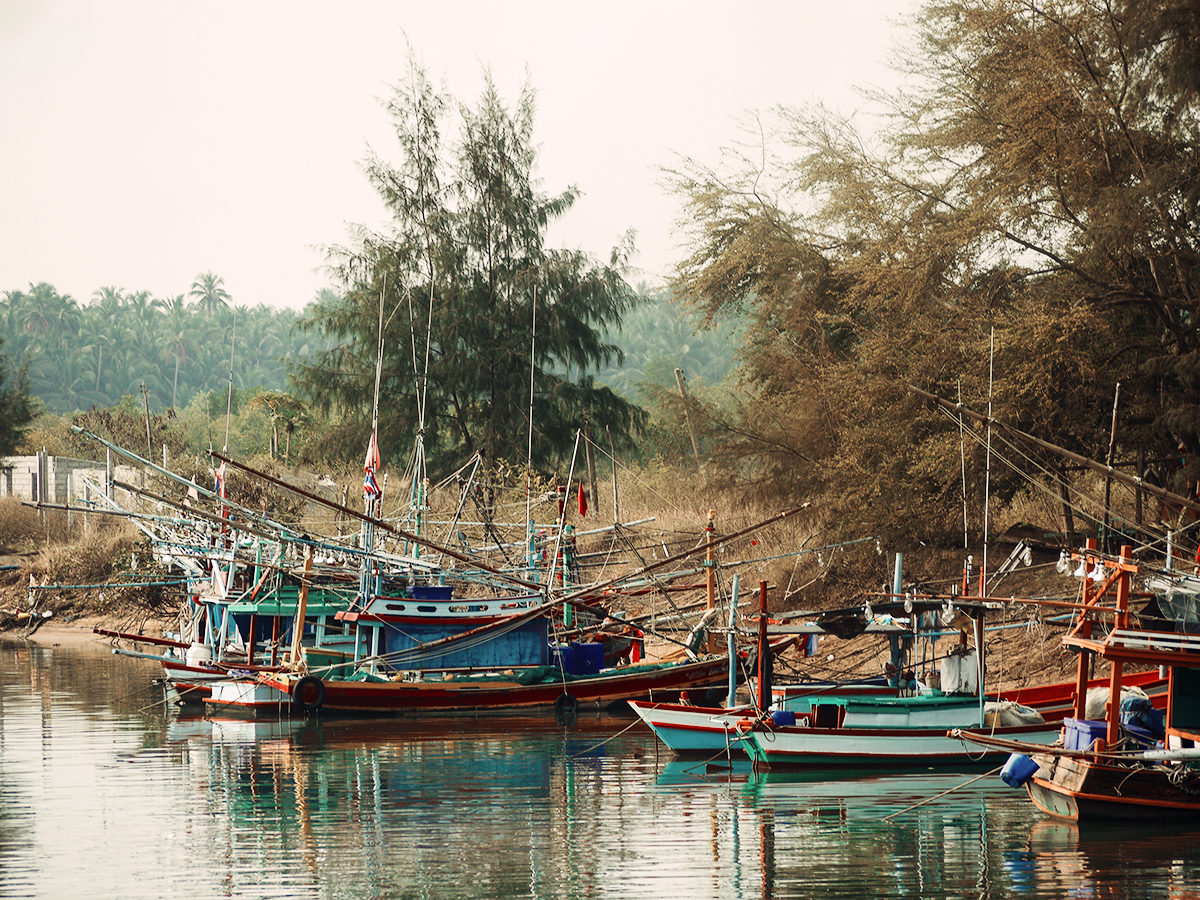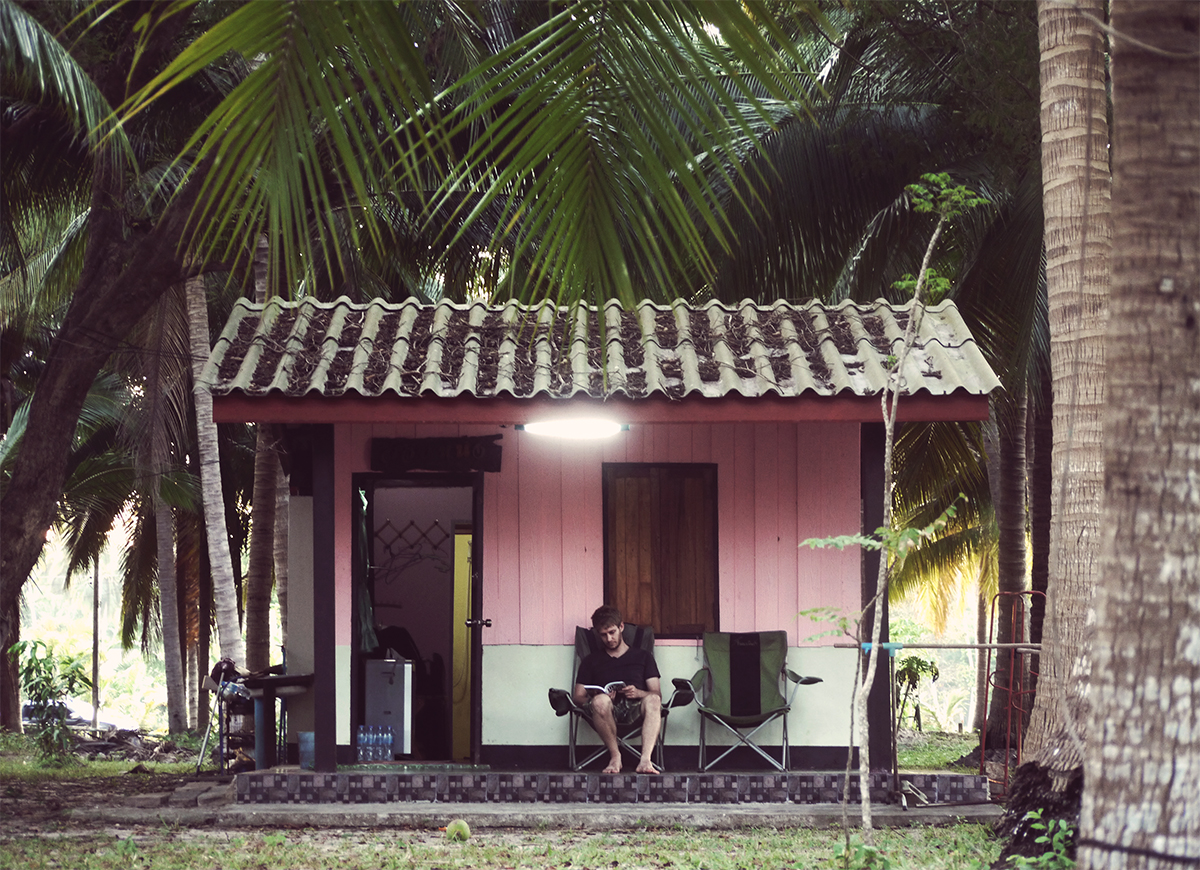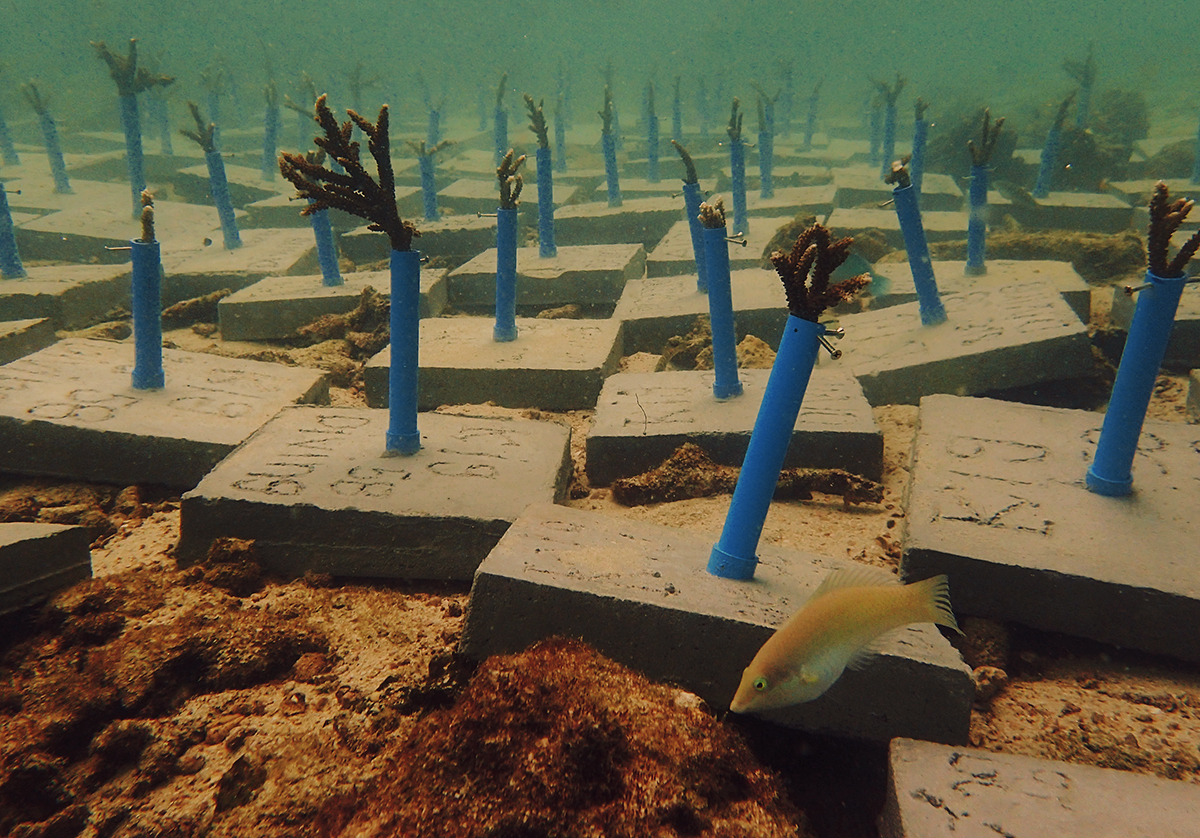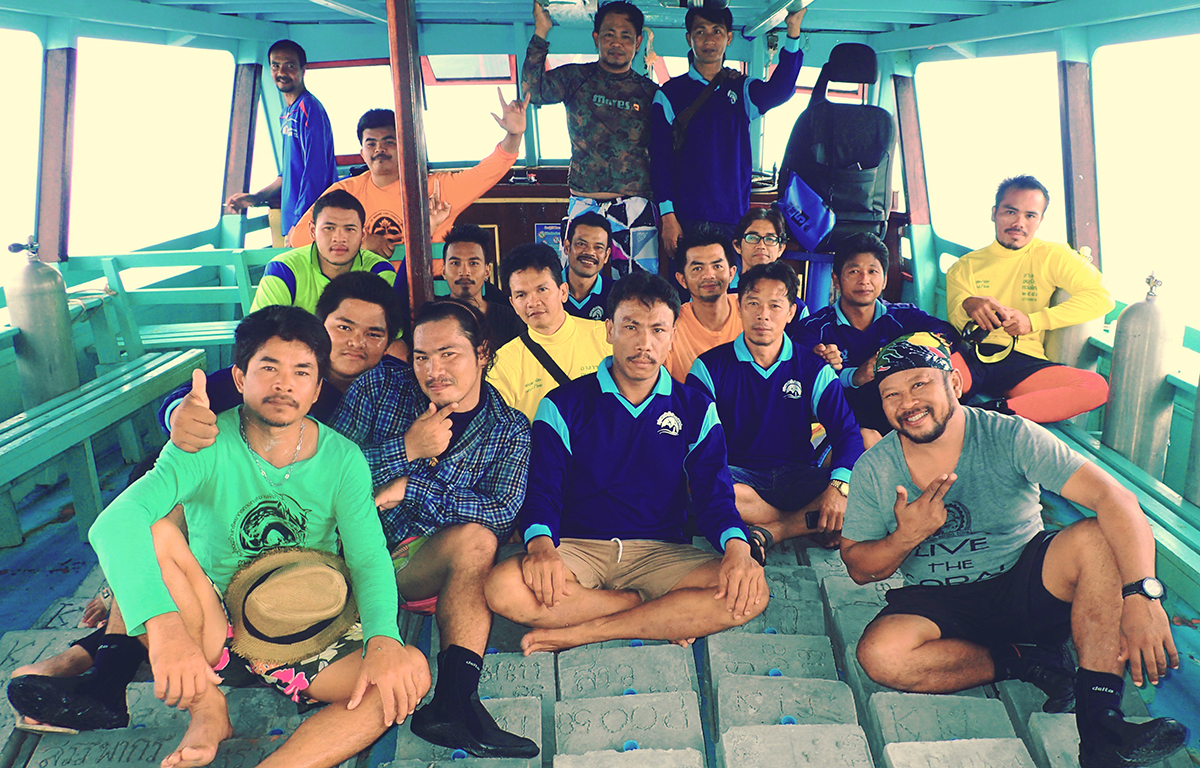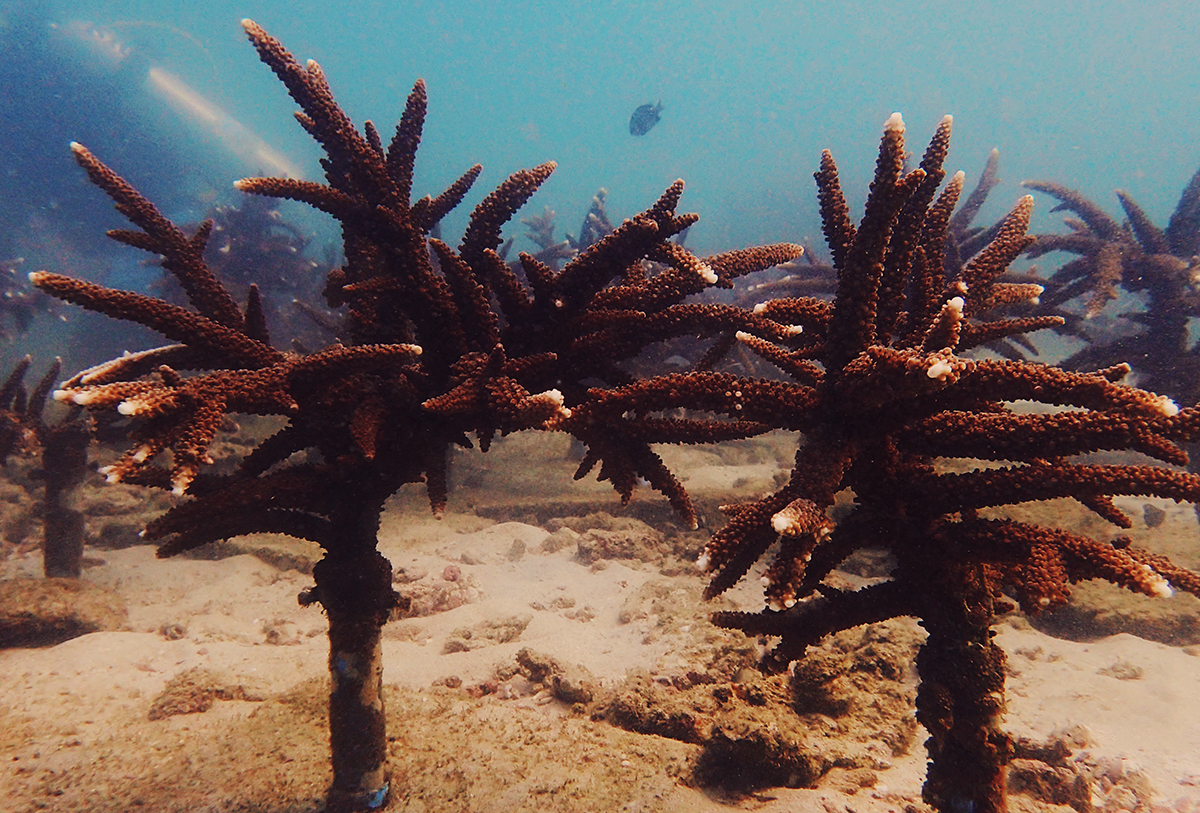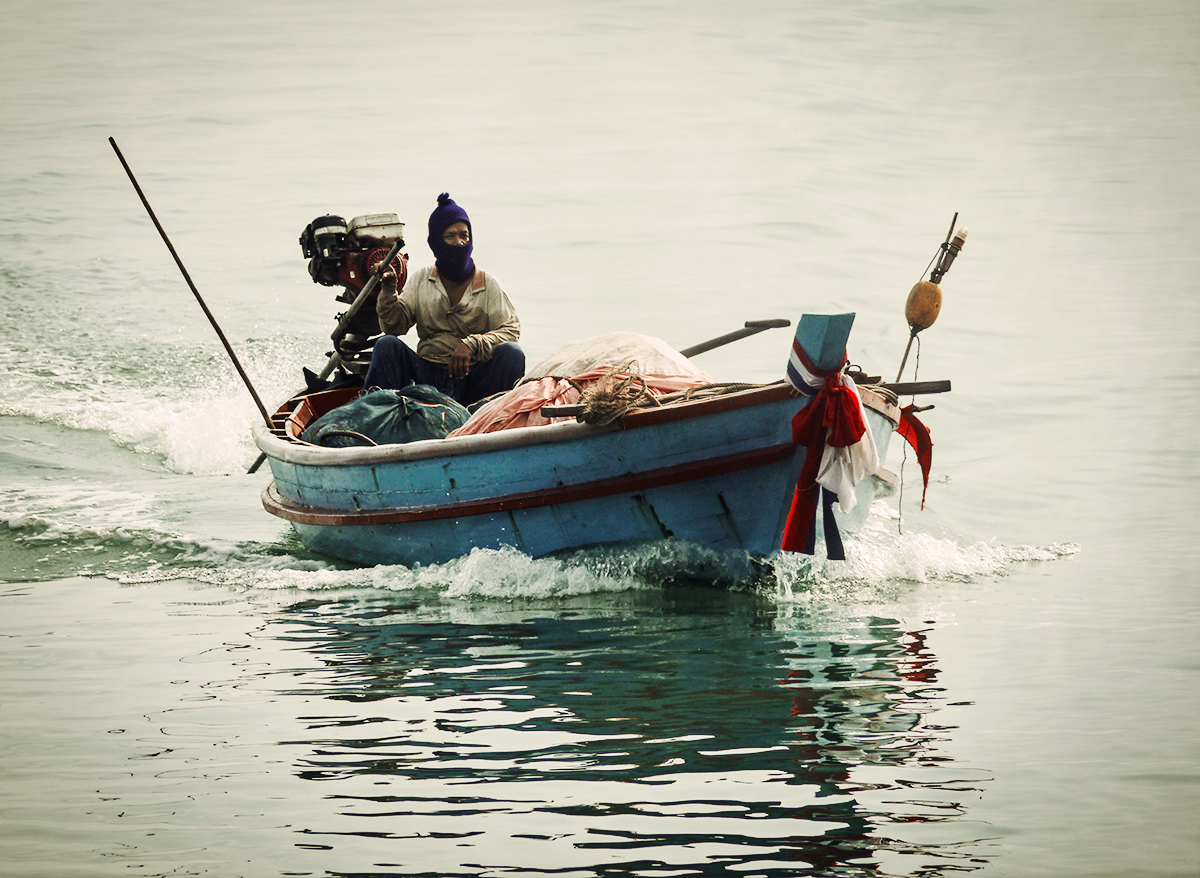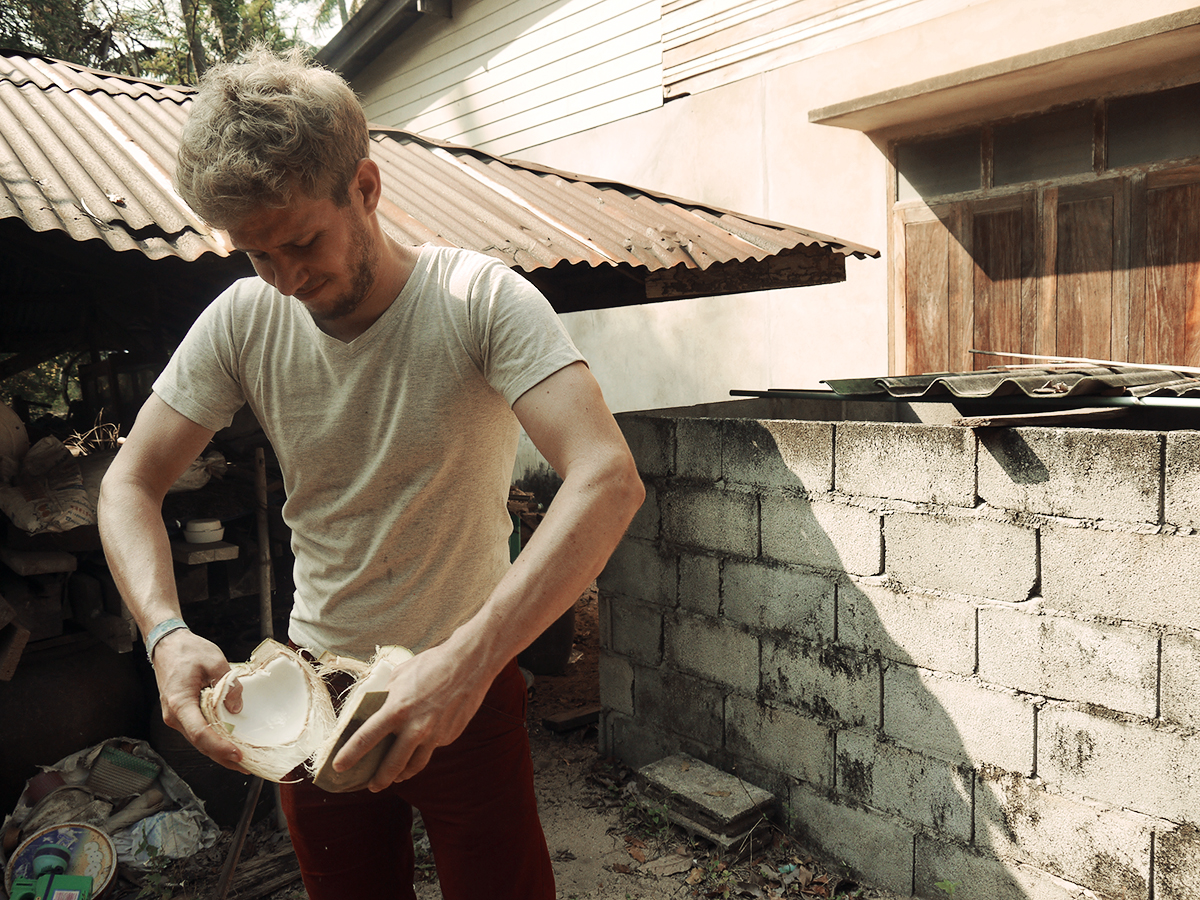Into TGL: The Thai Village Where the Sea Can Breathe
September 29, 2016
The Green Lion
Just over a decade after enduring one of the most devastating natural disasters in history, this tiny fishing village is still recovering from the loss of one of its most important food sources – its coral reef. With global warming added into the mix, the village’s two hundred inhabitants decided it was time to take action in order to allow its strip of ocean to breathe once again.
It was mid-February when Bernhard and I travelled south to this tiny village named Bang Saphan Noi in Prachuap Kiri Khan. The three-hour long train ride from Hua Hin struck us with some of the most breath-taking landscapes arraying lush hill-lined skies with turquoise sea waters as a backdrop.
Upon arrival at the train station, no one spoke English and we didn’t know what was going on. We had notified that we were arriving but Bernhard was unsure if that pickup van awaiting was the one that was supposed to be here for us (after spending time in Southeast Asia, you quickly learn that airports, bus and train stations are a place where you must be wary of people trying to scam you). But it was the only car there and even more so, we were the only foreigners in sight, so we decided to hop on and off we were, destination: unknown.
We were taken to the community center, where we were greeted with friendly smiles. After a refreshing drink, we were lent a scooter. I hopped on the back of a pickup truck while Bernhard followed the vehicle to reach our accommodation. Once past the river, everything began looking wilder and greener. We arrived at our pastel pink coloured “jungle” house, surrounded by coconut trees facing the forested hills that stand far into the landscape.
The next day, we headed back to the community center. It was hot and humid, but the motorcycle ride through the trafficless dirt roads would kick up a refreshing breeze. The road took us past huts on stilts, where we’d get glimpses of locals napping on hammocks, men refurbishing their boats and women lined up hanging clothes in their front yards. The community center is the main point where the villagers enjoy hanging out during the late afternoons – they bring their children to play while the women cook in hot pots and the men smoke cigarettes. It amazed me how much unity there is among them and imagine what it must be like to grow up in such a closed niche.
After being fed a scrumptious homemade coconut ice cream, we got an insightful lesson on their work. For the past five years, this village’s inhabitants have come together to restore the coral life around them. Destroyed by the 2004’s tsunami and rising temperatures of the water caused by global warming, the marine life has begun to blossom once again in this hidden strip of ocean.
“We have tried many things since the start of everything,” explained one of the chiefs, “but many have failed, so we had to think of a new plan and re-start everything.”
“We began by taking dead coral and placing it inside plastic tubes,” he disclosed, “Once ready, we would dive to the bottom of the ocean and plant a system of tubes on the ocean ground and wait for the coral to grow.” He pointed out to us how their first attempt was successful at first, but was later proven short-lived when the monsoon season arrived and the merciless tides struck the tubes from of the seabed.
“We had to come up with another solution, so we decided we would create heavy concrete blocks that the monsoons cannot destroy”, he said proudly as he demonstrated how the plastic tube adheres to the sturdy concrete.
“We head once a month to the bottom of the ocean and place one hundred new blocks”.
But it’s a slow process. It takes approximately one year for the coral to regenerate. “It has taken a long time, but after five years, we can already see a coral reef and fish using it as a nursery,” he exclaimed excitedly as he showed us videos and photographs from the previous month’s dive. “The fish have begun to come back to live in our corals. We close the bay every year on February 15th for three months so people can’t fish them and they can reproduce”.
Bernhard and I were really impressed by their efforts and achievements to bring their ocean back to life after having their lives as fishermen turned around. The willingness to strive against such odds and keep going were very heartening to me.
It’s a charming place. As we idly drove through the village, we were greeted by every single passer-by. There are no tourists here except for us and the whole scenario made me feel as though time had been standing still for this unique corner of the world. This place resembles what I imagine Thailand must have looked and felt like several decades ago.
We ate our lunch next to a mangrove plantation and were later taken to their home, where the family quickly brought out their bamboo ladder and climbed up a tamarind tree to pull down its fruits for us to try.
Before leaving, we got introduced to their pet crocodile – a two-meter beast that stared at us with disdain. We were gifted raw tamarinds and juicy coconuts as farewell trinkets. I have always said that, for better of for worse, nothing beats the hospitality given by people in the rural areas of developing countries.
After dinner, we were driven in a pickup truck to the train station, with us sitting on the back bed alongside four villagers that asked for a ride along the way. We said our farewells with the promise to return one day.
Despite the fleeting time we spent there, we managed to gather so much. I, for one, had never experienced such a strong sense of community as I did during my stay. Moreover, their efforts to restore the marine life after enduring so many hardships were very eye-opening to me. Through trial-and-error, a few handful of people managed to reshape their otherwise gone lives as fishermen and bring back life into their ocean. The people in this village are a truly inspiring example of how teamwork and perseverance can make a difference – a lesson I will carry with me forever.
Till next time, Bang Saphan Noi.
